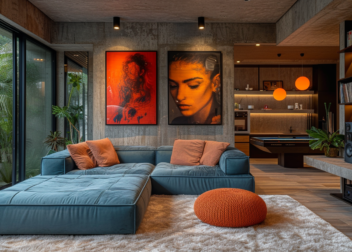The Importance of Architectural Design for Functional and Aesthetic Spaces
- 1 May 2024
- Architecure
- 2 mins read
What is Architecture?
Architecture is the art and science of designing and constructing buildings and other physical structures. It encompasses the planning, designing, and construction of spaces that are not only functional but also aesthetically pleasing. Architecture is a combination of creativity, technical knowledge, and problem-solving skills.
Architectural Design
Architectural design is the process of creating a blueprint or plan for a building or structure. It involves conceptualizing, visualizing, and developing ideas into a coherent design that meets the client’s requirements and fulfills its intended purpose. Architectural design considers various factors such as functionality, aesthetics, sustainability, and safety.
The Importance of Architectural Design
Architectural design plays a crucial role in shaping our built environment. It goes beyond just creating visually appealing structures; it is about creating spaces that enhance the quality of life for individuals and communities. Here are some key reasons why architectural design is essential:
- Functionality: Architectural design ensures that buildings and spaces are designed to serve their intended purpose efficiently. It takes into account factors such as space planning, circulation, and accessibility to create functional spaces that meet the needs of the occupants.
- Aesthetics: Good architectural design considers a structure’s visual appeal. It considers elements such as proportion, scale, materials, and colors to create visually pleasing spaces that harmonize with their surroundings.
- Sustainability: In today’s world, sustainable design is a key consideration in architectural design. Architects strive to create buildings that are energy-efficient, environmentally friendly, and minimize their impact on the planet. This includes incorporating features such as passive cooling and heating systems, green roofs, and the use of renewable materials.
- Adaptability: Architectural design should also take into account the future needs of a building. It should allow for flexibility and adaptability to accommodate changes in use or technology over time.
- Human Experience: Great architectural design considers the human experience and how people interact with the built environment. It takes into account factors such as natural light, acoustics, and the flow of spaces to create environments that are comfortable, inspiring, and conducive to well-being.
Architectural Design Process
The architectural design process involves several stages, each with its own set of tasks and considerations. While the specifics may vary depending on the project and the architect, the general process typically includes the following:
- Initial Consultation: The architect meets with the client to understand their requirements, vision, and budget for the project. This stage involves discussions, site visits, and gathering relevant information.
- Concept Development: Based on the client’s requirements and the site analysis, the architect develops initial design concepts. This stage involves sketching, 3D modeling, and creating design options.
- Design Development: Once a concept is chosen, the architect further develops the design, considering details such as materials, structural systems, and building codes. This stage may involve collaboration with engineers and other consultants.
- Construction Documentation: The architect prepares detailed drawings, specifications, and other documents required for the construction of the project. These documents serve as a guide for contractors and builders.
- Construction Administration: During the construction phase, the architect may provide on-site supervision, review progress, and address any design-related issues that arise.
Conclusion
Architecture and architectural design are essential in creating functional, aesthetically pleasing, and sustainable built environments. They involve a combination of creativity, technical expertise, and problem-solving skills. Good architectural design considers factors such as functionality, aesthetics, sustainability, adaptability, and the human experience. The architectural design process involves several stages, from initial consultation to construction administration. By understanding the importance of architectural design, we can appreciate the impact it has on our daily lives and the world around us.



